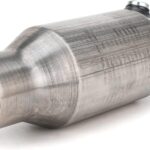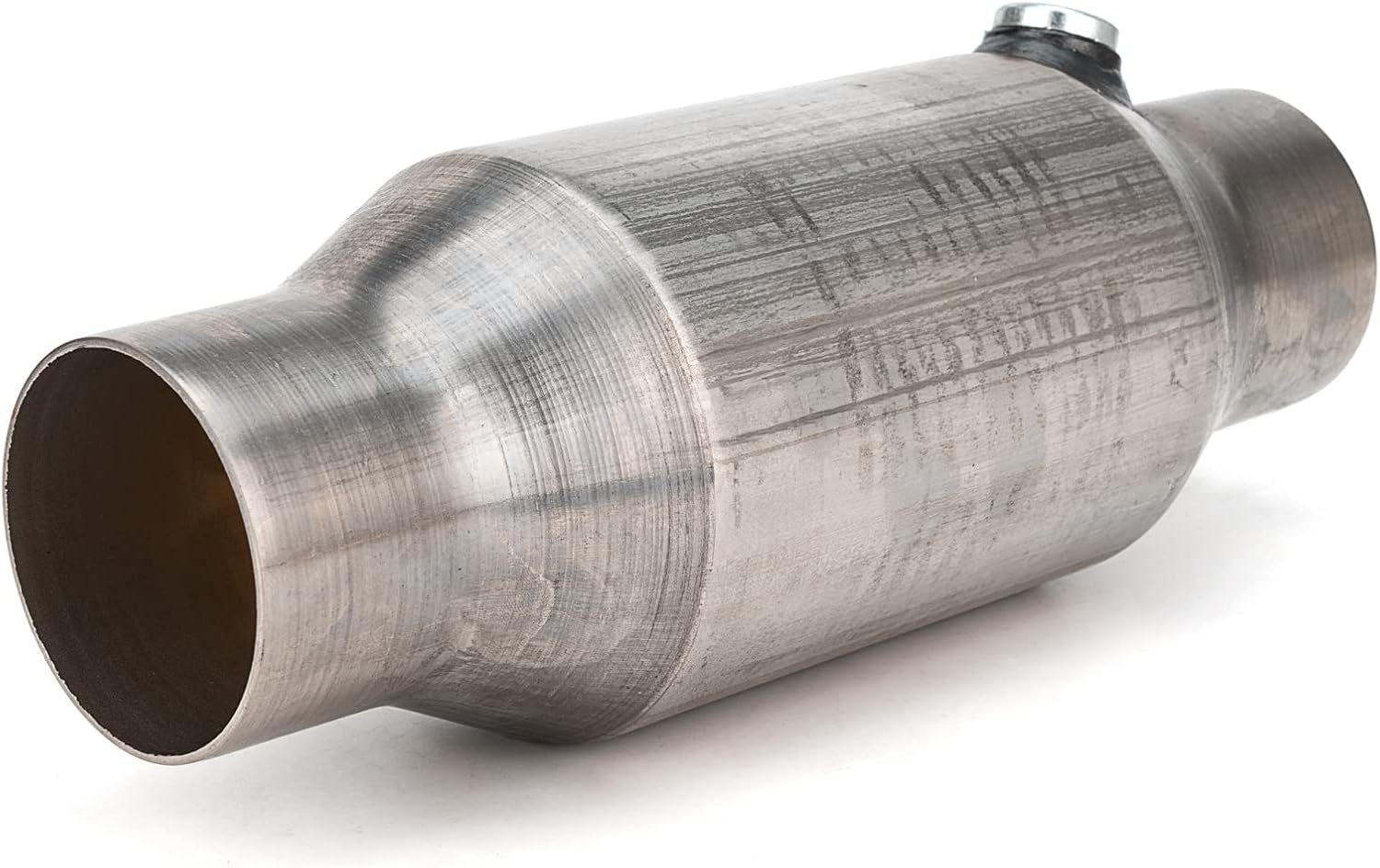Table of Contents
ToggleIntroduction
One thing that we often overlook when we think about enhancing our car performance is the catalytic converter. But for car lovers such as you and I, performance-focused drivers, upgrading to a high flow cat is a game changer. It enhances exhaust flow and keeps your ride emission compliant too! In this ultimate guide, we’ll go through what you need to know about high flow catalytic converters, how they work, their advantages, and why you need them for your vehicle.
What is a High Flow Catalytic Converter?
A high flow catalytic converter — a type of catalyst that reduces harmful compounds in your car’s exhaust — used to allow more exhaust gas to pass through than a stock part. Standard catalytic converters are sometimes restrictive, limiting engine performance. In contrast, high flow variants have a more open construction and greater surface area, so that exhaust gases can flow through more readily.
This design is boost friendly and also does not sacrifice emissions compliance. You can be driving a sports car, truck, or even a modified street car and a high flow cat can release potential that you didn’t have before.
How Does a High Flow Catalytic Converter Function?
Catalytic converters help reduce toxic emissions such as carbon monoxide, hydrocarbons, and nitrogen oxides. They do this using a chemical reaction that occurs with the help of precious metals, such as platinum, palladium and rhodium.
High flow catalytic converters work on the same principle but have some differences:
- More Zoning Design: A high flow converter is designed to minimize backpressure with the inside basically empty and allowing exhaust gases to come out freely.
- Increased Surface Area: inside the converter, the substrate is over a large area such that the exhaust gases come in maximal contact with it.
- Better Materials: High-flow converters typically make use of stronger materials and coating to improve the durability and efficiency.
- A high flow catalytic converter reduces backpressure of the exhaust, allowing the engine to produce more power, torque and using less fuel.
High Flow Catalytic Converter Benefits
Performance and Environmental Benefits of a High-Flow Cat. Here’s why you should consider it:
More Power and Torque
A High Flow Catalytic converter can offer one of the biggest benefits to your car; that of boosted performance. This allows your engine to push gases out with less resistance, which increases both your horsepower and torque. This can be particularly helpful for high-performance cars or those with aftermarket mods.
Improved Fuel Efficiency
When your engine doesn’t need to work as hard to expel engine exhaust gases, it uses less fuel. High flow catalytic converters can also boost your vehicle’s fuel economy, which means you’ll save money at the gas station.
Enhanced Exhaust Sound
For a bit more aggressive exhaust note, you can throw in a high flow catalytic converter. It can create a low, throaty sound with little of the shrieking, obnoxious tone by letting exhaust gases flow more freely.
Emission Compliance
High flow catalytic converters are fully street legal, despite being designed for maximum performance. These filters work miracles in reducing harmful pollutants, keeping your vehicle clean and green.
Durability and Longevity
High flow catalytic converters are designed for high driving performance. Numerous models utilize heavy-duty construction and advanced materials that deliver durability that standard converters can’t match.
High Flow Catalytic Converter: When You Should Upgrade?
Not every car requires a high flow catalytic converter, yet there are definite situations where it is logical:
- Performance Upgrade: A high flow catalytic converter can help maximize your gains if you’ve upgraded your engine, exhaust system or turbocharger.
- Restricted Exhaust Flow: If you have decreased performance from a clogged or restrictive catalytic converter, you will benefit from a high flow model that enables the exhaust pressure to relieve the bottleneck and restore your vehicle’s power.
- Track or Racing Use: Drivers who regularly take their car to the track can benefit from a high flow catalytic converter that will help with performance.
- Better Sound: If you want your car to sound as sexy as your car looks but don’t want to go the straight pipe route, a high flow catalytic converter is right where the middle ground starts.
How to Choose a High Flow Catalytic Converter
However, choosing the best high flow catalytic converter for your vehicle can be a daunting task due to the plethora of options available in the market. These are a few factors to keep in mind:
Vehicle Compatibility
Verify that the converter is also adaptable to your automobile make, model, and year. Some converters are universal in nature but others are vehicle specific.
Material Quality
High flow catalytic converters are costly—choose one made of top-notch materials like stainless steel or ceramic. Honest.Created from high-quality materials that are better withstand corrosion and heat, leading to longer than stock life.
Emissions Compliance
Make sure the converter is compliant with your local emissions standards. For example, if you live in California or a state with those same regulations, make sure it’s CARB compliant (for California Air Resources Board).
Cell Count
Higher cell count means a higher density of substrate in the converter. A lower count (200, 300 cells per square inch) will flow and perform better but may reduce efficiency in control of emissions. Higher counts (400 or 600) are better for emissions control, but can also be more restrictive.
Brand Reputation
Choose well-established brands as they are usually good in quality and performance. Some popular manufacturers are MagnaFlow, Flowmaster, and Walker.
Installation Requirements
Decide if the converter is a welding model or a bolt-on. Bolt-on converters are simple to install; welded models are more complicated and might require a professional.
High Flow Catalytic Converters Installation
If you’re comfortable with working on your vehicle then installing a high flow catalytic converter can be a do-it-yourself project. To ensure hassle-free installation, here are some tricks:
1. Safety First: Always work in a well-ventilated area, and wear protective gear such as gloves and safety glasses.
2. Jack Up the Vehicle: Safely jack up your vehicle with jack and jack stands to access the exhaust system.
3. Remove the Old Converter: Use a wrench or socket set to take off the bolts or clamps securing the old converter. If it’s welded, you will need a cutting tool.
4. Fit the New Converter: If applicable, place the new high flow catalytic converter onto the installed pipes and install with bolts/clamps. Seek a professional if welding is necessary.
5. After installation, start the engine and check for any exhaust leaks. If necessary, tighten the connections.
If you’re not confident in your ability to install the panel yourself, consult a professional mechanic for assistance.
High Flow Catalytic Converter Myths
Before diving deeper, let us clear up some misconceptions about high flow catalytic converters.
They’re Illegal
High flow catalytic converters are not street legal, is a widespread myth however in actuality they are street legal as long as they meet emissions standards. What I Write The information on this site is created through research and personal knowledge.
They Don’t Reduce Emissions
High flow catalytic converters essentially lower the emissions produced in a vehicle the same way as the standard converters. That doesn’t mean they can’t do so responsibly, and that’s the difference.
They’re Only for Race Cars
High flow catalytic converters are most commonly used by racers, but they also serve as a nice upgrade for everyday drivers who want to improve performance and fuel economy.
How to Maintain High Flow Catalytic Converter
A well-maintained high flow catalytic converter can greatly optimize the performance of your vehicle.
- Regular Inspections: Inspect for signs of damage during routine maintenance, such as cracks or rust.
- Preventing Engine Misfires: Unburned fuel can enter the converter due to misfires and damage it. No, you address engine things quickly.
- Use Quality Fuel: Low-grade fuel can create deposits that clog the converter. Use quality fuels from reputable brands.
- Observe Performance: If you see a dip in performance, higher emissions, or a check engine light, inspect your converter.
Conclusion
For anyone aiming to upgrade their vehicle performance without losing the environmentally friendly element, investing in a high flow catalytic converter is the way to go! With less exhaust backpressure, this frees up horsepower, enhances fuel efficiency and gives you a better sounding exhaust note as well. So, whether you’re someone who lives for performance or you’re someone who wants to get the most out of your daily driver, upgrading to a high flow catalytic converter is a choice that you will never regret.
Look out for quality, compatibility and emissions compliance when selecting a converter. Your high flow catalytic converter will deliver years of great performance when installed and maintained correctly. So, why wait? Start your journey towards a more thrilling and efficient ride today!
Check out the latest High Flow Catalytic Converters on Amazon!
You may be also interested in 6 Best Peptides for Fat Loss







